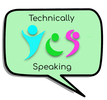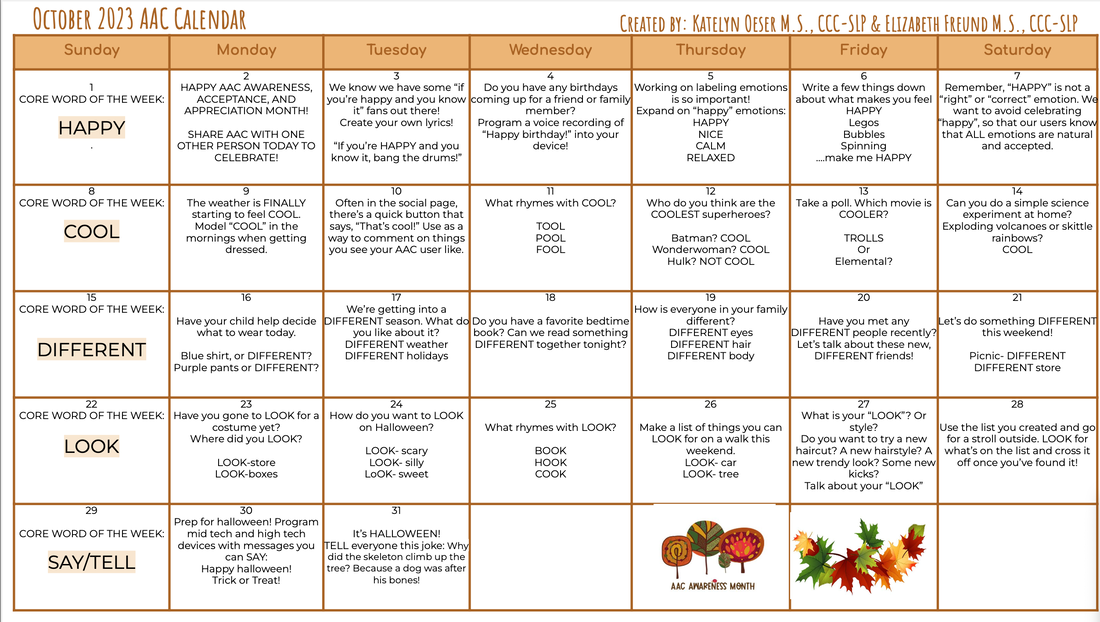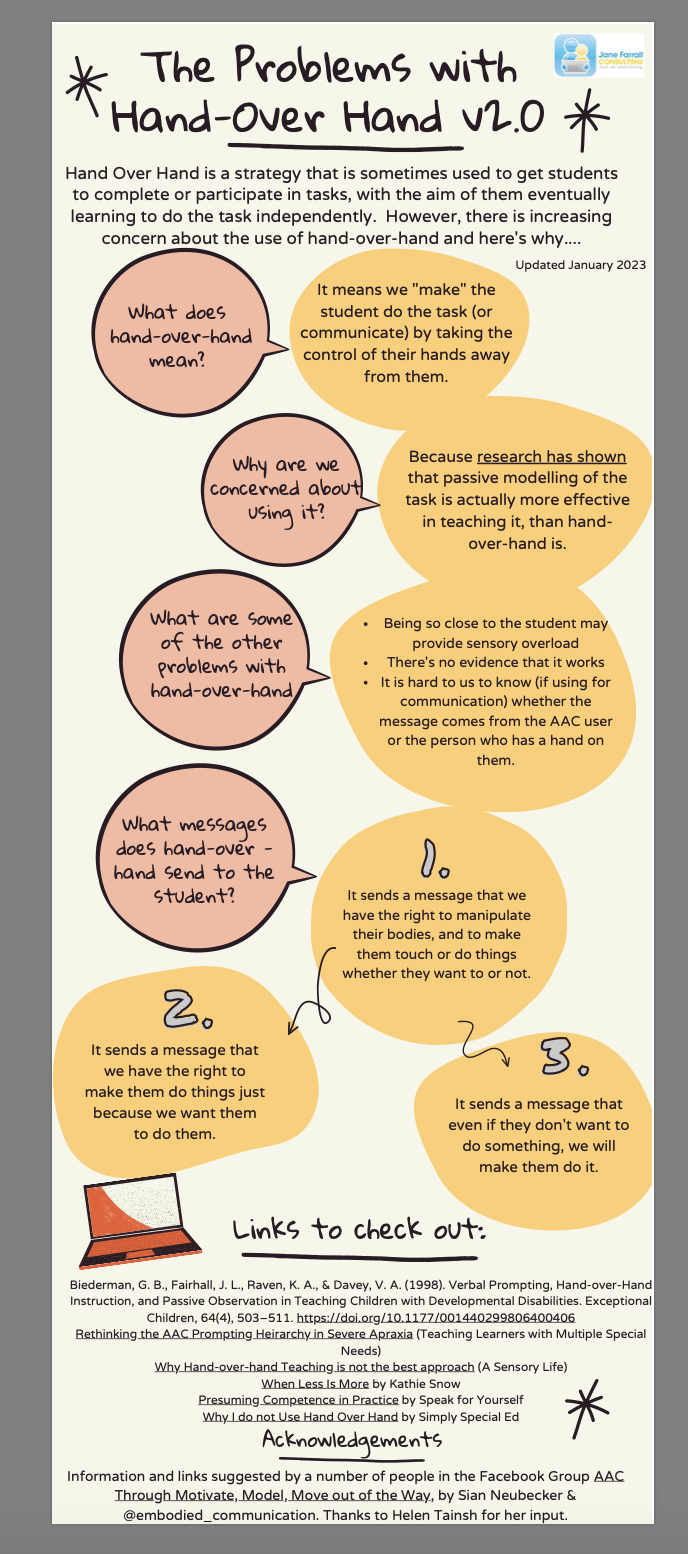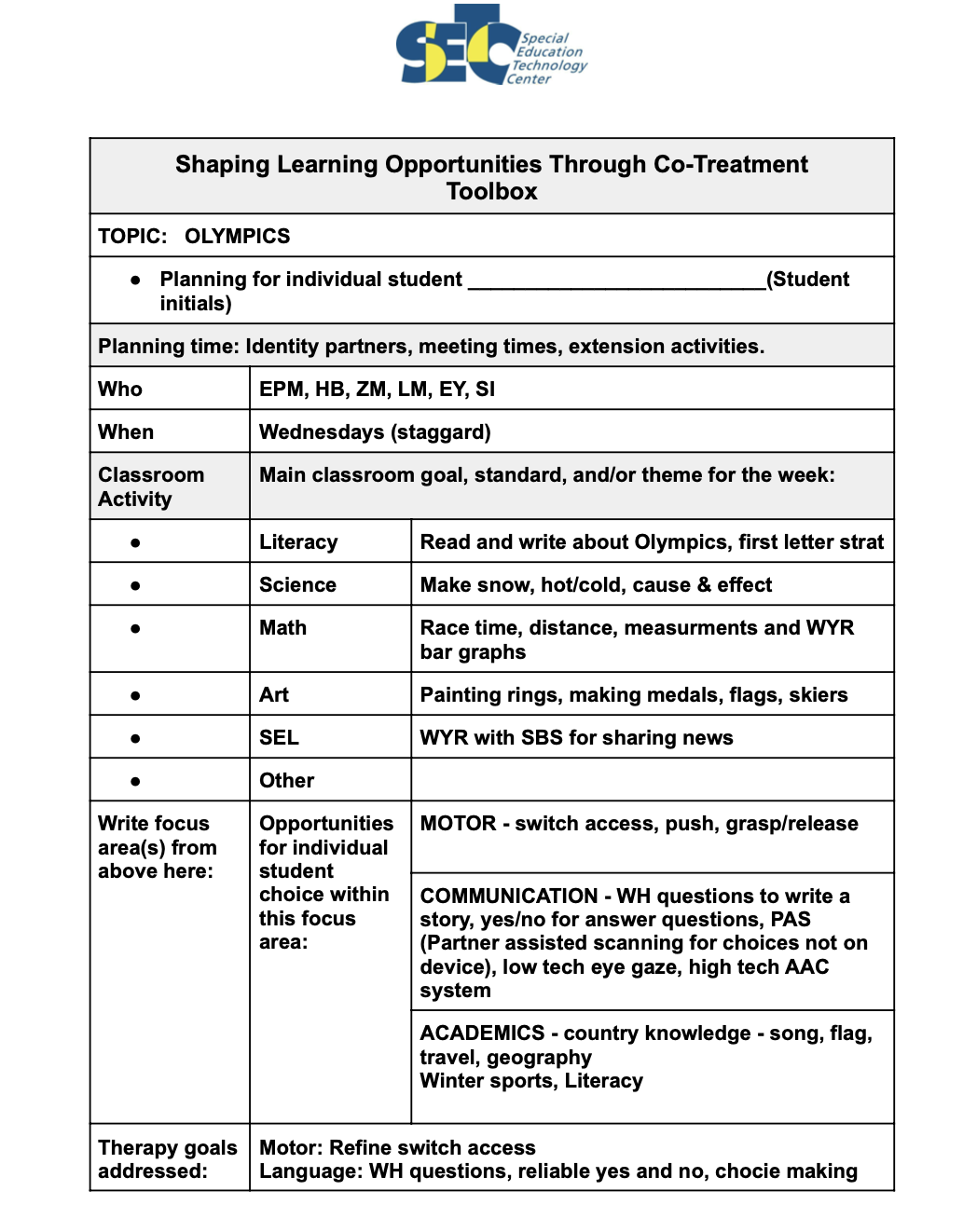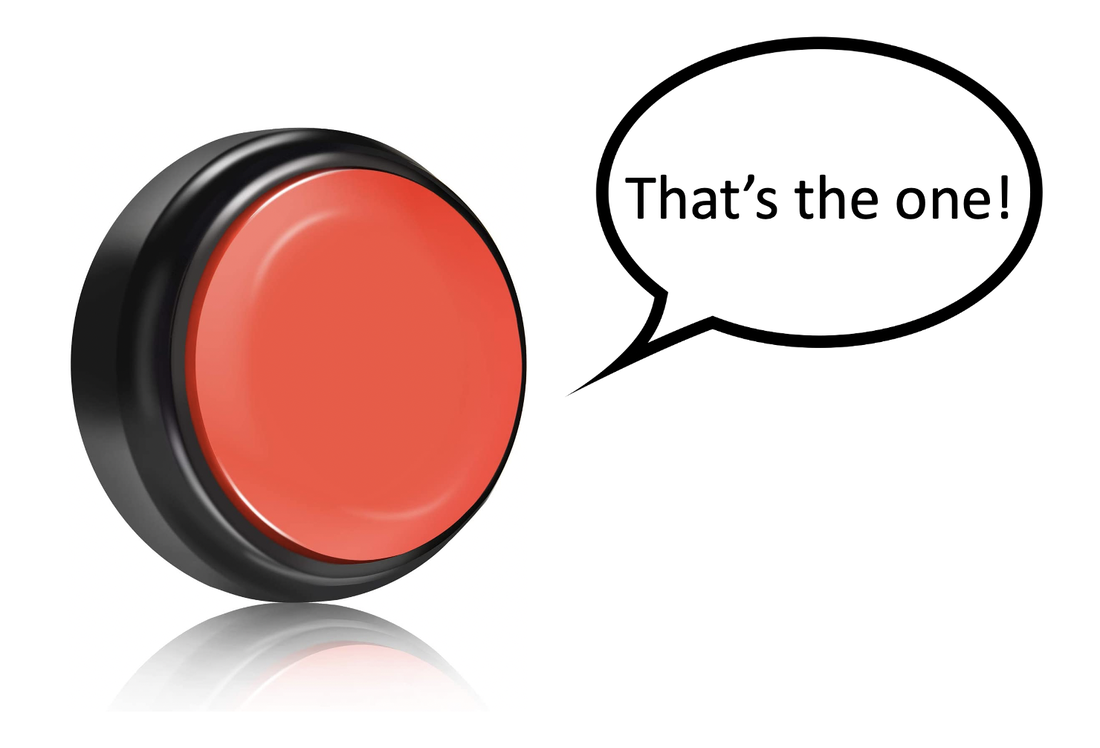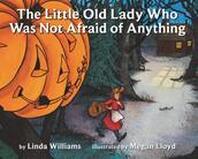| octwritingprompts23.pdf | |
| File Size: | 1471 kb |
| File Type: | |
If you haven't started following Jane Farrall, stop, drop and look her up! January's tip of the month is "NO HAND OVER HAND." But don't take my word for it! Read her article and print her hand out and post it EVERYWHERE.
https://www.janefarrall.com. Check out this video for more instruction: Problem with Hand-Over-Hand
https://www.janefarrall.com. Check out this video for more instruction: Problem with Hand-Over-Hand
WINTER OLYMPIC GAMES Check out my YouTube Channel for Winter Olympic Game ideas! We are had so much fun adapting bobsledding, skiing, curling, etc. We are even writing our own "olympic stories."
|
Shaping Learning Opportunities Form
docs.google.com/document/d/e/2PACX-1vQGul1QBGVM06HUGoDb2spWmqe1fE12mB2pX9MxAvP-MTJY-TlFaU5w1Ew-GBzPPQ/pub
|
Partner Assisted Scanning
If you have one switch that you can record one thing...try this! Record "That's the one" on the switch and place the switch where a child can voluntarily and independently depress the switch. (If you aren't sure where to put it, place at head near the temple.) Next you are going to tell the child they need to make a choice. For example, "Do you want bubbles, a book or a Moana video? Hit the switch when you hear the one you want." Then say the list again with 3-5 seconds between each one. "Bubbles (1-2-3-4-5), Book (1-2-3-4-5), Moana Video (1-2-3-4-5)." Repeat the list at least 3 times before you change the list. You don't need fancy or expensive equipment to give a child choice and show them the power of communication!
|
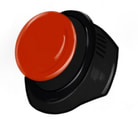
- Vocabulary: outside, night, behind, actions (hear, walk, clap, shake, etc), clothes, colors and feelings
- I put my hands on my body and theirs to assist with wiggling, clapping and shaking. The level of alertness is high!
- Use a Step-By-Step to record the text sequence that repeats in the book.
- Use a single message button to record "Not afraid of anything". Pause each time this phrase appears and prompt the child if necessary to "read their part."
- Tell their own version of the story using Wh questions - Who is going on a walk in your story (boy, girl, man, woman, animal)?, When does your story take place? (Day or Night), where is your character walking (home, school, store), what things does your character run into along the way (accept any and all answers or provide yes/no questions), how do they feel (happy, sad, scared, sick, etc). How does it end? Be sure to write down their words! You can share it in written form, recorded form (single message button, step-by-step or button on their device
- Tap out syllables AN - Y - THING - "That's a long word! If we type AN on your keyboard, can we find this long word in word prediction?"
- First Letter - You pick a letter and we will read it again to see how many words tart with your letter. Write down words you read that start with that letter. You could also have the child indicate through any sound or voluntary movement when they hear a word that starts with that letter.
- I put my hands on my body and theirs to assist with wiggling, clapping and shaking. The level of alertness is high!
- Use a Step-By-Step to record the text sequence that repeats in the book.
- Use a single message button to record "Not afraid of anything". Pause each time this phrase appears and prompt the child if necessary to "read their part."
- Tell their own version of the story using Wh questions - Who is going on a walk in your story (boy, girl, man, woman, animal)?, When does your story take place? (Day or Night), where is your character walking (home, school, store), what things does your character run into along the way (accept any and all answers or provide yes/no questions), how do they feel (happy, sad, scared, sick, etc). How does it end? Be sure to write down their words! You can share it in written form, recorded form (single message button, step-by-step or button on their device
- Tap out syllables AN - Y - THING - "That's a long word! If we type AN on your keyboard, can we find this long word in word prediction?"
- First Letter - You pick a letter and we will read it again to see how many words tart with your letter. Write down words you read that start with that letter. You could also have the child indicate through any sound or voluntary movement when they hear a word that starts with that letter.
